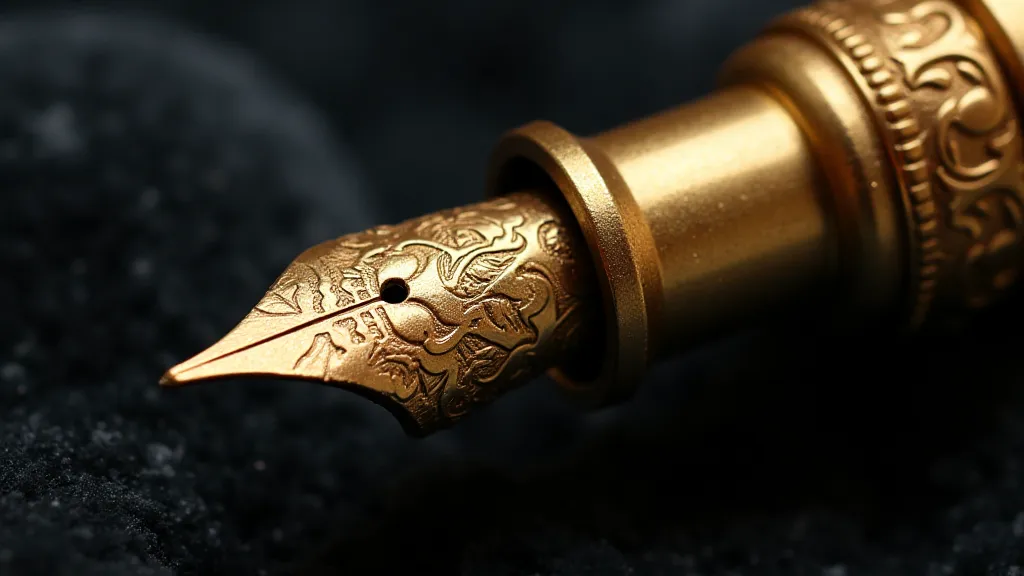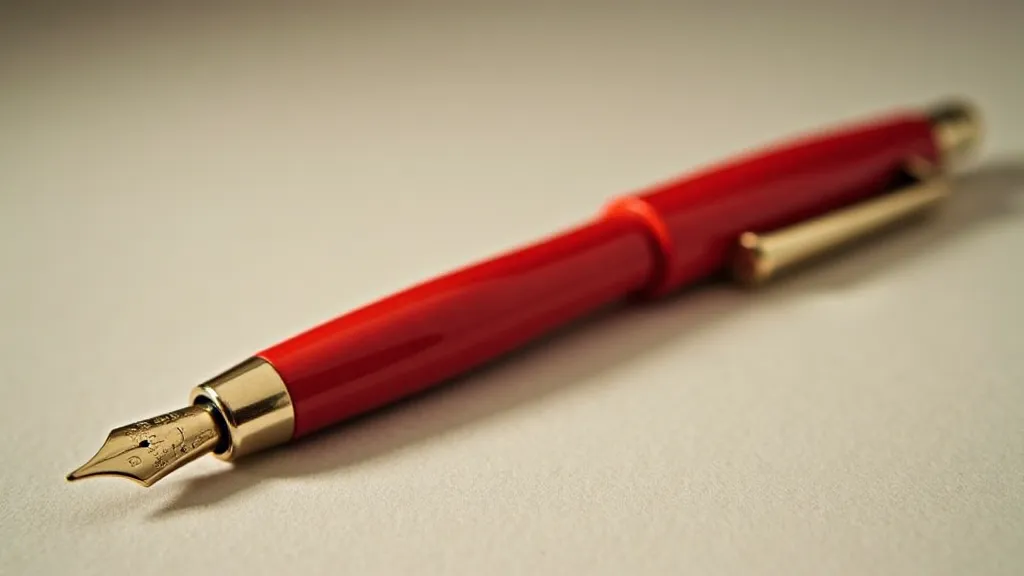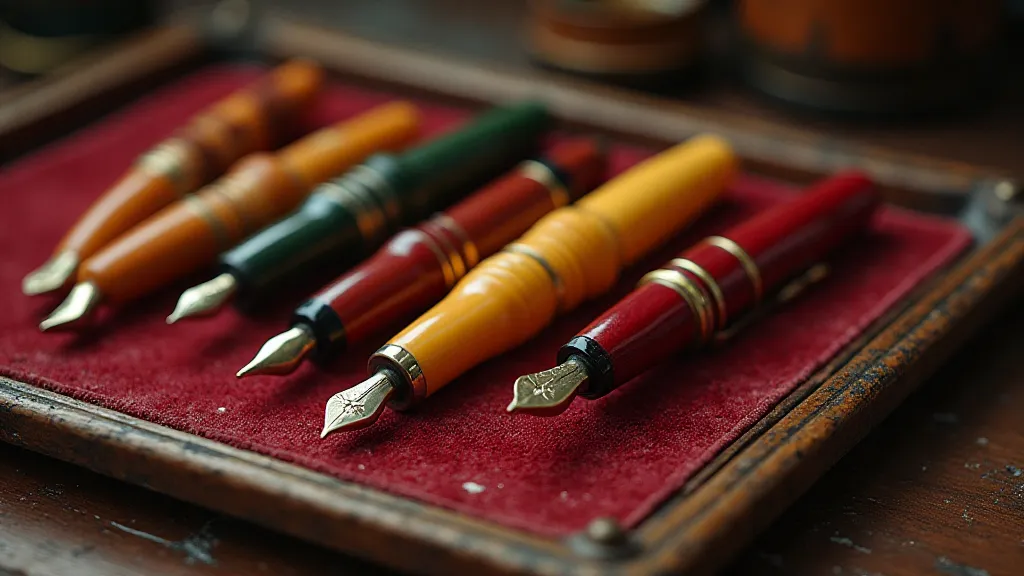Chronicles in Chrome: The Rise and Fall of Pen Material Innovations
The story of antique pens isn's just about ink and nibs; it's deeply intertwined with the story of materials. From the glinting gold of empires to the humble plastics of the mid-century, the evolution of pen materials has dictated design, functionality, and ultimately, the collectibility we cherish today. To hold an antique pen is to hold a tangible piece of that story, a whisper of the era that birthed it.
My own fascination began with a Waterman’s Ideal from the early 1920s. Found tucked away in a dusty antique shop, its simple black hard rubber body felt cool and substantial in my hand. There was a quiet dignity to it, a sense of permanence that modern disposable pens simply lack. It wasn’t flashy, but the sheer craftsmanship, the way the nib seemed to anticipate my thoughts as I wrote – that was captivating.
The Age of Precious Metals: Gold, Silver, and Platinum
For centuries, the elite wrote with treasures. Gold, often alloyed with silver to increase its durability and workability, was the material of choice for royal decrees, legal documents, and personal correspondence. The act of writing became a statement of wealth and status. Think of the elaborate gold point holders of the Renaissance, ornate and impractical, yet symbols of the writer’s position in society. Silver, too, saw its moment, though its tendency to tarnish limited its longevity. Platinum, when it emerged, offered a unique combination of brilliance and resistance to corrosion, becoming a favorite among discerning users, though always a more expensive option.
The craftsmanship involved in working with these precious metals was, and remains, remarkable. Jewelers, not just pen makers, were often called upon, adding intricate engraving, filigree, and chasing to the pen's surface. These embellishments weren't just decorative; they were a testament to the skill and artistry of the artisan. The weight of a solid gold pen in your hand isn’t just physical; it’s a feeling of history, of connection to a legacy of luxury.

The Rise of Hard Rubber and Early Plastics
The late 19th and early 20th centuries brought a pivotal shift: the introduction of hard rubber (ebonite). Derived from natural rubber, ebonite offered a significantly more affordable alternative to precious metals, opening up the world of fountain pens to a wider audience. Waterman, Parker, and Sheaffer were among the pioneers, establishing themselves as household names. Ebonite's dark, lustrous finish was often mistaken for black hard rubber, masking its affordability. Its durability and resistance to ink leakage proved crucial, paving the way for mass production and standardized designs.
However, ebonite had its drawbacks. It was prone to cracking and discoloration over time, especially with exposure to sunlight. The smell, a distinctive rubbery aroma, could also be off-putting to some. The development of celluloid – the first truly synthetic plastic – offered a potential solution. Celluloid pens, often vibrantly colored and adorned with intricate patterns, became incredibly popular. Their delicate beauty and relative affordability contributed to their desirability amongst collectors. Sadly, its high flammability made it a material with inherent dangers.
Celluloid’s Successors: Bakelite and Beyond
The early 1930s ushered in the age of Bakelite, a thermosetting plastic that revolutionized the pen industry. Bakelite offered significant advantages over celluloid: it was far less flammable, much more durable, and could be molded into complex shapes with remarkable ease. Its versatility led to a surge in experimental pen designs, many of which are highly sought after today. The iconic Parker "Vacumatic" and the Sheaffer "Patrician" are prime examples of Bakelite's potential.
The post-war era saw a proliferation of new plastics – acrylics, polystyrene, and various copolymers – each offering unique properties. Acrylic pens, known for their vibrant colors and clarity, became a staple for many brands. The introduction of piston fillers and cartridge/converter systems further streamlined the writing experience. But this widespread availability led to a decline in the perceived value and prestige of fountain pens. The act of writing became less of an event, more of a convenience.

The Modern Era and the Return to Craftsmanship
The rise of ballpoint pens and gel pens in the latter half of the 20th century significantly impacted the fountain pen market. While disposable pens dominated the mainstream, a niche market remained for those who valued the writing experience. Today, we see a resurgence in interest in fountain pens, driven by a desire for quality, craftsmanship, and a connection to the past.
Many modern pen manufacturers are revisiting classic materials and techniques. Solid gold pens are once again prized for their beauty and heft. Celluloid, though still challenging to work with, is making a comeback among collectors and enthusiasts. The pursuit of authentic materials and meticulous craftsmanship defines a renewed appreciation for the art of pen making. Restoration has become a valued skill; the ability to revive a worn Waterman or Parker from the early 20th century is a testament to both skill and respect for history.
Holding an antique pen isn't just about writing; it’s about experiencing a tangible link to the past. It’s about appreciating the ingenuity and artistry of those who came before us. It's a reminder that even the simplest tools can be imbued with beauty, history, and a profound sense of connection. That faint scent of ebonite, the cool weight of gold, the vibrant color of Bakelite – these are the sensory echoes of a rich and enduring legacy.






